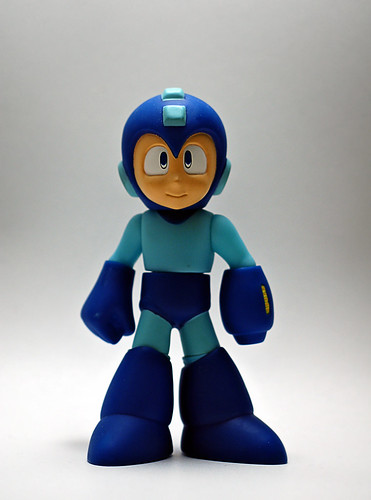Thing stories
April 21, 2012
A little while ago, at the New York MakerBot User Group, they were talking about a project to buy things from thrift stores, scan them into Thingiverse, and then donate them back. Though you can only do it once (or at most a few times) per object, it struck me as a great idea - money for charities, and digitization of the world for Thingiverse’s audience of makers.
The group leaders mentioned this blog by Emily Spivack, in which she lists eBay items which, importantly, have stories associated with them. I can’t find it right now, but the User Group leaders also mentioned a (study? experiment?) in which items were sold on eBay by themselves, and then relisted with an accompanying story in the item description. For example, listing a dress and letting the auction finish, then re-listing the same dress with a story about the wedding it was worn to. The value of things with stories was significantly higher than the value of things without stories.
I can think of lots of reasons why this would be true. Fundamentally, stories and narratives are the way we understand the universe, and make decisions about our lives, and are possibly all we actually have. Telling ourselves stories about the future, for example, is an important tool that we use every time we make a decision. So to associate a story with something is to add philosophical meaning on top of the object’s value for use, or decorative value. Stories are also entertaining, which is valuable, and an object is a powerful way of telling a story because it immediately gives the words vividness, and concreteness, and some sense of connection to the real world.
I think gold may actually be a good example of this. Gold is a commodity, of course, with “gold” describing any number of atoms with 79 protons. But you hear about the ”gold standard”, or “money backed by gold,” or “all the gold in Fort Knox.” Economists talk about gold having some sort of intrinsic value, that it’s valuable in and of itself and is therefore something you’d consider basing a currency on. This makes money backed by gold, some argue, better than the paper money we have today, which is valuable just because we say it is.
But of course, gold is also valuable just because we say it is. Sure, it’s rare, but it’s an object, it’s a material, it’s not something you can do anything particularly special with except make things that are pretty and that people like. I don’t think its decorative value accounts for the fact that gold currently costs $1,700 per ounce (almost $30,000 per pound).
Probably part of what makes gold valuable now is that almost everyone, everywhere, at all points in human history, have agreed that it is. Even if civilization collapses, gold can still be used to pay for things. That makes it like a super-powerful version of paper currency; paper currency is only agreed to be valuable under a certain set of circumstances, and its value can be upended at any time through counterfeiting or printing too much money.
But I wonder what made gold valuable in the first place; what underlies this historical function. It has a lot of interesting properties such as durability, shininess, and rarity. I think it also does not tarnish (pure gold doesn’t, at least). Do these attributes let us make up stories about it? Is that why gold became attractive to human beings in the first place?
There are a lot of startups that get their value from thing-stories today. Etsy is a great example - what you buy there is more valuable because you’re enabling the individual maker who crafts things with love and care. These are good things, but part of the value of that is the emotional component of imagining the production process. On the other hand, consider the iPhone. You _don’t_ want to think about the production process. Instead the narrative that goes with the iPhone is that it’s a tool for living a simpler life, or a more technologically advanced one, or a more elegant one.
But then again think about a startup like Uber. The value of that service isn’t in the narrative at all, it’s in the service they’re providing and their technology. Maybe that’s a good marketing angle for them, I don’t know; car companies and airlines talk about the stories they enable all the time (“we know why you fly.”)
An interesting application of “thing stories” could be in the market for used goods. When I’ve bought books, in the past, I’ve valued books that are new, that I think will last, and that are unmarked, etc. More recently, I’ve actually enjoyed buying used books, partly because I just don’t see any reason to pay for “newness” anymore. I wonder if someone could find books with markings and other sources of wear, attach a (hopefully true) story to them, and convince buyers of the value of those stories? We already do this for certain types of books (those owned by famous people, for example). What if we did this for all books?
(Two asides to the above: (a) there are strong arguments for a gold standard, but I think they rest on the idea of money’s worth being tied to something with a fixed supply, which could be anything, (b) there is probably no such thing as “intrinsic value”, which is outside what I want to talk about here.)
